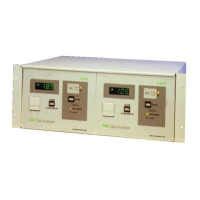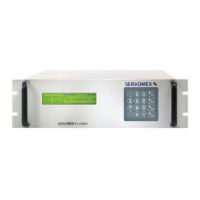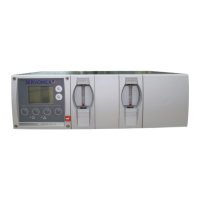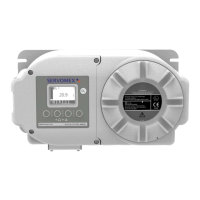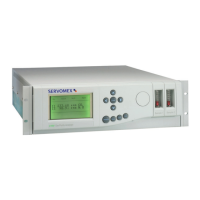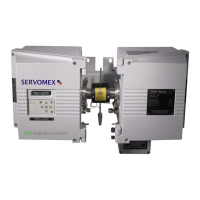3.24
To erase the store, enter the password and set parameter 95 to zero by pressing:
SET SAMPLE
9
5 ENTER
3.8.10 Range Change Alarm
This alarm indicates any change in the setting of the analogue output. It is parameter number 61.
Changing the following will cause the alarm to go active:-
Output range - parameter no. 18
Zero suppression - parameter no. 11
0-20mA or 4-20mA and reverse output - parameter no. 13
When the analyser is supplied the alarm is disabled. The analogue output should be set-up as
required. To enable the alarm enter the password and press
SET 6 Lo
1
ENTER
The display should show
0.01 61
The alarm will now become active when any of the analogue output parameters are changed. The
alarm can be cleared by resetting the analogue output parameters to their original values or by
resetting the alarm to new values by following the above procedure.
The alarm can be disabled by setting parameter 61 to 4.
3.9 ALARM RELAYS
If the optional alarm relay board containing four relays is fitted then the alarm functions can be
allocated to the relays.
It is possible to allocate more than one alarm function to the same relay and the same function can
be allocated to more than one relay. (Maximum of 16 alarm functions to one relay).
3.9.1 Allocation of Alarms to Relays
The four relays are numbered 1 to 4 (No. 1 is the top) and are given the parameter numbers 21
to 24. The parameter number of an alarm is used when it is allocated to a relay. For example,
to allocate the cell low temperature alarm (parameter 92) to the third-relay (parameter 23).
